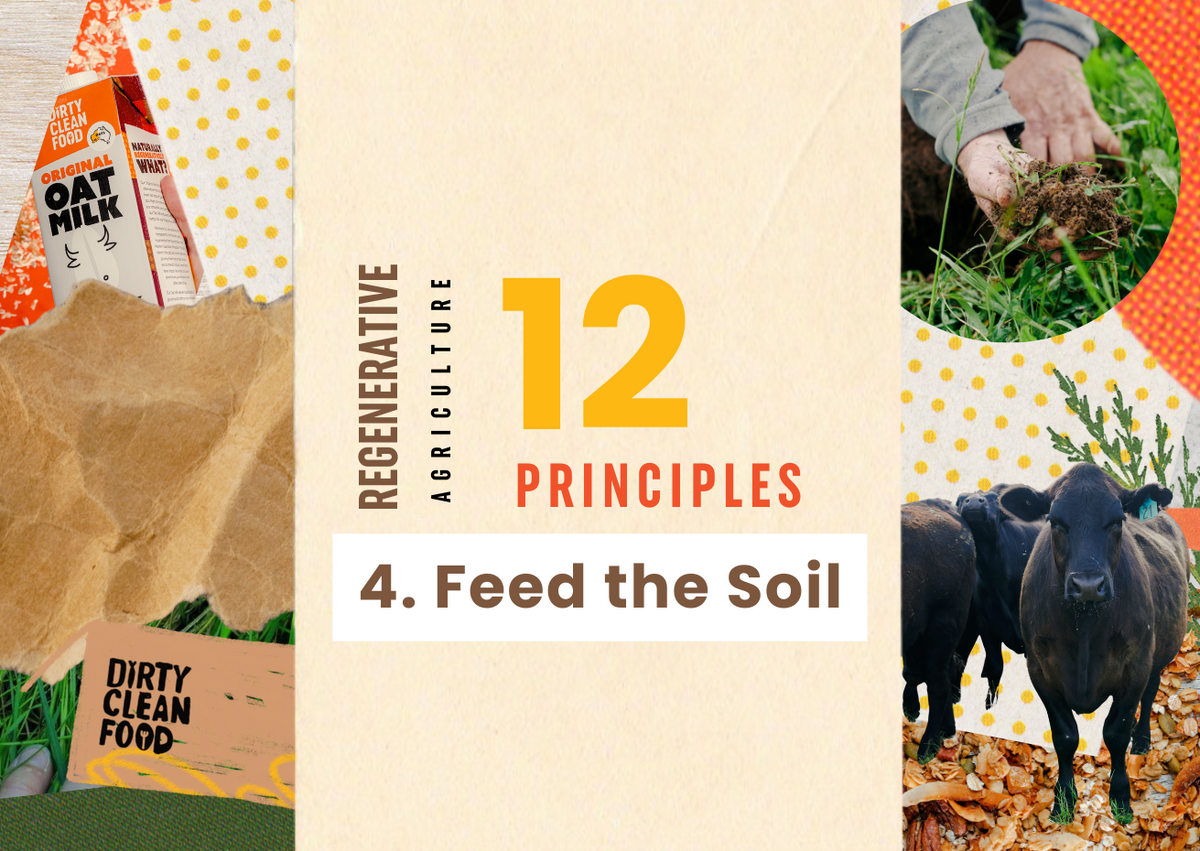
Regen Ag #4- Feed the Soil Food Web
|
Time to read 3 min
|
Time to read 3 min
Welcome to our 12 Principles of Regenerative Agriculture series- where we define "regen ag" and show you how regenerative farming changes the planet, the system, and our food.
In the realm of regenerative agriculture, there exists a profound principle that resonates deeply with the interconnectedness of all life: "Feed the soil food web, not the plant." This principle encapsulates a fundamental shift in perspective, one that emphasizes the importance of nurturing the living ecosystem beneath our feet rather than only focusing on the immediate needs of the plants above ground. At its core, this principle emphasizes nurturing the health and vitality of the soil ecosystem as the foundation for vibrant plant growth and overall ecosystem resilience.
In conventional agricultural approaches, the focus has often been on maximizing plant yields through the application of synthetic fertilizers and pesticides. While this may lead to short-term gains in productivity, it comes at a significant cost to the long-term health of the soil and surrounding environment. Chemical inputs disrupt the delicate balance of the soil food web, leading to diminished microbial activity, reduced soil structure, and increased susceptibility to erosion and nutrient runoff.
In contrast, regenerative agriculture embraces a holistic approach that recognises soil as a living, dynamic ecosystem teeming with microbial life, fungi, insects, and earthworms. These diverse organisms form intricate food webs where each organism plays a vital role in cycling nutrients, decomposing organic matter, and maintaining soil fertility. By nurturing the soil food web, farmers can harness the natural processes that promote plant health and vitality while enhancing the resilience of the entire ecosystem.
Central to the "feed the soil food web" principle is the concept of soil organic matter. Organic matter serves as the lifeblood of the soil, providing essential nutrients, improving soil structure, and fostering microbial diversity. Instead of relying on external inputs, regenerative farmers prioritise building soil organic matter through practices such as cover cropping, crop rotation, composting, integrating animals into farming systems, and minimal tillage. These practices not only enrich the soil but also sequester carbon from the atmosphere, mitigating the impacts of climate change.
Another critical aspect of the soil food web is the role of beneficial microbes, such as bacteria and protozoa. These microorganisms play a crucial role in nutrient cycling, nitrogen fixation, and disease suppression. By fostering a diverse microbial community, farmers can harness the natural processes that support plant growth and resilience. Practices such as incorporating microbial inoculants, using compost teas, and minimizing chemical inputs help to promote a healthy soil microbiome.
An example of a fungal friendly crop that our farmers grow are lupins, grown by both our lupin supplier, Stuart McAlpine, and Oats grower Steve Ford. Lupins, as legumes, foster symbiotic relationships with mycorrhizal fungi through their root systems. They produce specialized cluster roots that release organic acids, creating an environment where fungal colonies thrive. This symbiosis enhances nutrient uptake, particularly phosphorus and nitrogen, benefiting both the lupin and surrounding plants. Additionally, lupins support diverse fungal communities in the soil, promoting soil health and fertility.
‘Regenerative agriculture is an ecological approach to farming that allows landscapes to renew themselves.’
In essence, the principle of "feed the soil food web, not the plant" embodies a paradigm shift in how we approach agriculture. Instead of viewing soil as a mere substrate for plant growth, we recognize it as a complex living ecosystem that requires care and stewardship. By nurturing the soil food web, we not only improve the productivity and resilience of our farms but also contribute to the health of the planet.
As consumers, we have the power to support regenerative farmers who prioritize soil health and biodiversity. By choosing regeneratively grown foods and supporting initiatives that promote regenerative agriculture, we can collectively contribute to a healthier, more resilient food system for generations to come. Let us embrace the wisdom of the soil food web and cultivate abundance in harmony with nature.





